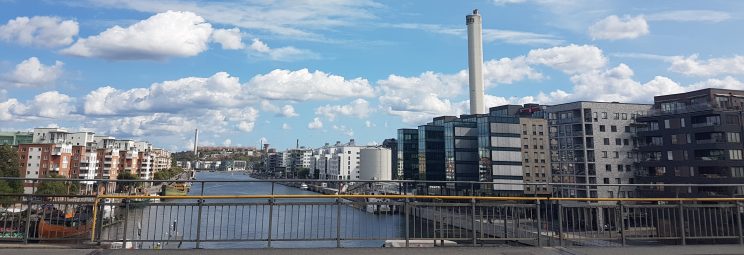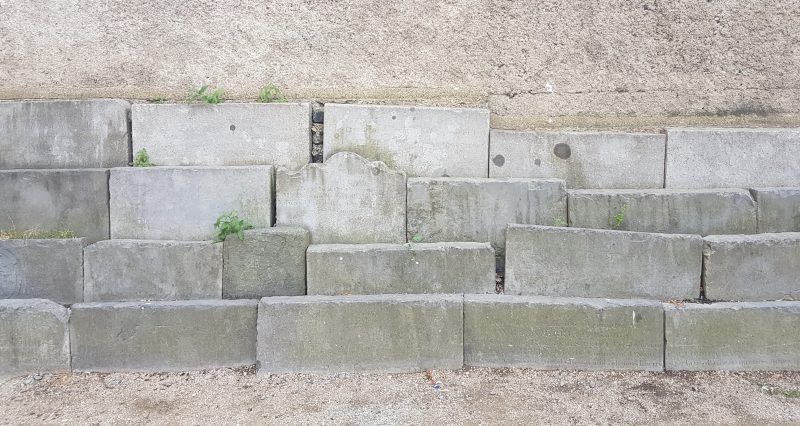My Brexit travels had turned from a reasonable 5 week journey into a 3 month escape, my longest journey to date. While visiting lake-locked Zurich, three weeks before my return to my proposed forever destination, I booked my longest AirBnb accommodation to date: 6 weeks in Hornstull, part of Stockholm’s trendiest island Södermalm. Since my Swedish residence application could take 2 – 6 weeks to get a response, I needed a stable address for that duration. AirBnb does give a minimum 10% discount for stays of 7 days or longer and an impressive 20% discount for month-long bookings. However, this was by far the most difficult cost of the relocation tour.
When I finally did return to STHLM, I had to quickly change my Irish Three, month-to-month, mobile SIM card contract for the Swedish 3 equivalent. Just like I needed a stable address in the case the government contacted me by mail, I also needed a local telephone number. Three is the only mobile phone provider in Sweden that doesn’t require a personnummer, though the United Kingdom and even Irish equivalents were far more international and generous in terms of offering. After that, I printed my application to prepare for the residency appointment the next day.
The appointment was even more straightforward this time around and they even revised the response time from 2 – 6 weeks down to 1 – 6 weeks. Since I had received my response last time within 10 business days, I thought I could expect the same on this occasion. With this in mind, I decided to hold off on getting settled, integrating, and making friends until I got my 10 magic numbers, the first 6 digits of which were my birthdate. I literally waited at home and attacked my to-do list with full force, taking breaks for a few outings for groceries and bodybuilding.
The Immigration Exchange

My residency appointment with Skatteverket was on October 1st. I received an email from my caseworker on October 10th. I submitted my 1st application a day or two after signing up for my first private medical insurance (BUPA Worldwide). It is worth noting that my first application to CIGNA was rejected and I generally prefer to work with EU services. The paperwork wouldn’t arrive for a few days and had to be sent to a permanent address anyway, so I sent it to my mom’s address outside of Europe. With this lack of insurance paperwork in mind, I asked the representative who sold me the coverage to please email me a letter stating that it complied with Sweden’s 3rd requirement for private medical insurance:
“It should compensate necessary healthcare up to a value of at least SEK 10 million…”
Since I still didn’t really have any more insurance paperwork at hand, I submitted my 2nd application with this same document. Now, the Skatteverket representative was attempting to verify that my medical insurance fulfilled the 4th and strictest requirement:
“The insurance may not have any exemption clauses that mean that it does not cover necessary medical care. There may be clauses that apply to dental care, fertility treatments, voluntary plastic surgery and force majeure situations such as war and natural catastrophes as well as preventive healthcare (for example health examinations without a medical justification), vaccinations, care of injuries resulting from participation in official sports competitions or training for such competitions, and care of injuries resulting from ‘high-risk activities’, e.g. parachuting and mountain climbing.”
So I forwarded my health insurance guide. On October 24th, I received the following response:
“So I have had a chance to look through the comprehensive terms and I have a few questions.
Have you added any additional options to your core cover or do you solely have the Worldwide Medical Insurance? And the exclusions shown, are they general exclusions or are they specific for your health cover since there is a section called “personal exclusions”?”
My response 30 minutes later:
“I think I only have the core, Worldwide Medical Insurance coverage. The “personal exclusions” section are general. My impression is that they are similar to the following section “pre-existing conditions”. This is my first time getting private medical insurance, but I’m paying 2,107 SEK a month for this plan, so it is quite expensive. In the US, my employer provided insurance, just like most companies do. In the UK, I used the National Health System (NHS). I still have my European Health Insurance Card from the UK, but didn’t submit it with my application because it expires in less than 1 year, on the 21st of July, 2019.
Is this medical insurance going to be problematic? My impression was that it fulfilled all the Skatteverket requirements. Is there another insurance provider that is more popular with applicants?”
The caseworker’s response the next day:
“Okay. Based on the documents that you’ve showed me I can’t tell which plan you have so please send a confirmation of which one you have so that I can look at the specific conditions for that one.
Unfortunately the European health insurance card isn’t a health insurance we can accept if your plan is to live in Sweden. Those are only valid for vacation or studies.“
My response 2 hours later:
“The generic name of the plan “Worldwide Medical Insurance – Core Cover” is likely causing the confusion. Attached is a certificate for my medical insurance.
This webpage might also clarify some of the insurance conditions: https://www.bupaglobal.com/en/international-health-insurance/se/health-insurance . If more documentation is required, please let me know what I should be asking for from the insurance company representative.
If another plan is required, please let me know and I can upgrade very easily.”
A week later, on Thursday, November 1st, she responded saying that will look at the document next week.
How to move to Sweden (or anywhere for that matter)

Around four weeks after submitting my residency application, it was clear that I had made a series of mistakes concerning the move to Sweden:
- Deadlines and expectations: While October 2018 was probably the most productive month of my life (outside of university), I had clearly underestimated the processing time of my 2nd application.
- Testing: Attacking my to-do list at home was fine, except that time could have been better utilized getting to know people in Stockholm better. If I had trouble integrating, like in the UK, would it really make sense to stay?
- Timing: Although I had booked 6 weeks at a single address for the government response, I couldn’t very well wait that full time before arranging my next apartment. The return home for my father’s 80th birthday was also only 30 days away, 2 weeks from the end of my current rental. This trip would also allow me to pick up all my clothes, but only if I knew I was staying in STHLM.
When I had originally read Sweden’s immigration procedures, they seemed reasonable. In fact, they were close to my expectations when I first moved to Europe. By the end of October however, I had also become quite frustrated at this critique of my private medical insurance. Wasn’t it sufficient for Skatteverket simply to say that I am not entitled to healthcare for my first year in Sweden and that I am responsible for my medical costs? Obviously, I would have to pay all the fees from my private insurance regardless of whether the coverage met their standards or not. Sweden’s overly aggressive, residency requirements for EU citizens were why the European Commission had investigated the country back in 2007.
Despite these challenges, it started to become clear that I wanted Stockholm more than anywhere else in Europe. Certainly, there were other places I still had left to visit: Hamburg, Munich, Vienna, Hawaii. While the Brexit Travel Blog will continue to explore these other destinations even after I choose a home, I simply must give Stockholm a try. Even if my 2nd application is refused, I had decided that I could probably live for a year without a personnummber. After 1 year, I am presumably entitled to this essential privilege and can start to use reserved services, mainly medical care and banking, without restraint. With my newly discovered resolve, I sublet a furnished apartment for 6 months.
So how should you go about following my Brexit recommendation and move to Sweden (or any other country for that matter)?
- Acknowledge visa restrictions: This guide is mostly meant for citizens of EU member nations. If you fall outside this realm, stressful 1-year visas might be all you can get. You’re probably better off going to Japan then.
- Come for a 7 day visit: Between the boring flights on your first and final days, you’ll have 5 full days to figure out whether you like the city.
- Meet as many people as possible: Come to a Couchsurfing event or go to a Meetup and see whether the Swedish character is fit for you. Remember that friendly shopkeepers are probably not the best measure of whether you’ll be able to establish a large enough social circle after you move.
- Find your neighbourhood: It might only take you a few hours to fall in love with Stockholm. While you’re waiting for your evening social events, start looking at housing availability and costs on Qasa.se. Like most western European capital cities, central STHLM accommodation is outrageously priced. Most of the people I meet live outside the centre, south of Södermalm, north of Vasastan, or west of Kungsholmen. All these greater areas will have easy access to the centre by metro or bus. Check out the place that’s right for you and make sure you’re comfortable with the commute. Start with Solna.
- Book an apartment: This is where I really messed up. After you’ve made your decision to try Stockholm a few years, you’ll either start the job search from abroad or move here directly. If you move without a job, you probably need enough savings for a worst-case scenario of 6-months without income. If you have a job, you’ll automatically be given a personnummer. Either way, commit to a 6-month stay and skip the limbo I experienced.
Purgatorial endings

As mentioned, after sending more medical insurance details on Thursday, October 25th, my immigration casework responded a week later, Thursday, November 1st saying that she will review the documents the following week (November 5th at the earliest). By this time, I was in the process of finalizing a long-term apartment sublet and working at the Stockholm International Film Festival. When Friday, November 9th came and went, I now had the problem of updating the gov’t with my new address for the imminent move the next week, on the Wednesday the 14th. My move-in day came and went without any response from my immigration gatekeeper.
The next morning, at 10:52 Central European Time (CET), two weeks after the last response from my purgatory guard, she speaks:
“I will send your letter with your personal number today. Where should I send it?”
I took a break from searching for the local Marimekko shop in Södermalm to find an emergency towel and sent her the updated details. I was thrilled. Finally, this unnecessary and burdensome uncertainty had been resolved. I was no longer this unwilling digital nomad, but an aspiring expatriate in Stockholm, Sweden, per square metre, the world’s most beautiful city. The endless queue of tasks that were waiting on the personnummer overtook the limbic freedom.
…And shortly thereafter, a different type of agony started…
Brexit Blogs and the future of travel
Now that I am officially starting to get settled in Stockholm, my long journey comes to a close. While I still have trips back home to Los Angeles and Bristol to pick up my things, I need to stop travelling and start making a life in STHLM. Relocating requires hard work seeking out new friends and the first 6 months in a place can be lonely and isolating. Once I’m back on my feet again, I’ll be continuing my travels, following the quarterly, week-long, European standard. With your permission, I’ll continue writing the Brexit Travel Blog, evaluating the liveability of appropriately-sized cities in Europe and throughout the world, meeting digital nomads living the dream in Hawaii, Thailand, Vietnam, China, Australia, Austria, Poland, and Portugal.
In the meantime, checkout some other Brexit Blogs on Feedspot’s Top 50 Brexit Blogs. I’m working my way up from number 31.



1 Comment
Add Yours →Really enjoyed your informative update and wish you all the very best Monty! Sounds very inspiring – congratulations!!
Cheers,
Paula (Japan /NZ)